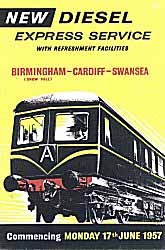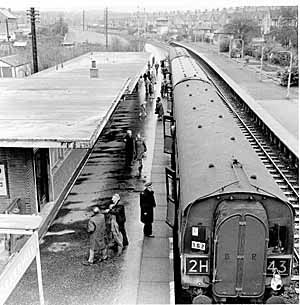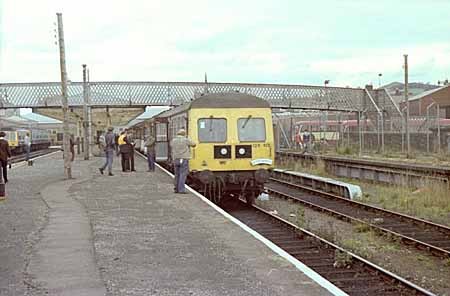Sign In
Remember Me
The introduction of what became the Class 126 diesel multiple units originated in a British Transport Commission report of 1952 that suggested the trial use of diesel railcars. BR’s works at Swindon were chosen to design and build express units for the ex-North British Railway Edinburgh Waverley to Glasgow Queen Street route (mentioned in the above report). These were the first DMUs to be built with the longer 64′ 6″ underframe.
Most were introduced to Edinburgh – Glasgow services in January 1957 allocated to Leith Central depot. However the first six three-car sets worked their first three years on Western Region on Birmingham – South Wales services. There was criticism of the lack of a forward view for passengers and also of the plain utility appearance on the non-gangwayed cab front. The usual E&G formation was a six-car set with two trailers together in the centre of the train. The class usually stuck to this route but could appear on other services from time to time.


The second batch entered service in August 1959 from Ayr depot and was mostly used on Glasgow to Ayr, Girvan, Stranraer, Largs and Ardrossan workings. Formations were either three- or six-car with the trailers between two power cars as per most of the 1st Generation DMU classes.
The 1970s saw the first class accommodation downgraded. Being of a non-standard design, the class was not included in the DMU refurbishment programme so remained in close-to-original condition. The main alteration was the plating over of the outer gangway connection on the DMS vehicles in 1979-81 owing drivers’ complaints of draughts.
Originally designed for a life span of 15 to 20 years, by the 1980’s the units were looking decidedly run down. Each unit had covered over two million miles in service. Once-modern interiors had suffered from the wear and tear of millions of commuter journeys – and at the hands of vandals.
The run down of the class was swift following the decision to electrify the Glasgow to Ayr route. By this time Scottish Region had begun to take delivery of the first of the Sprinter type units and the requirement for the ‘first generation’ units was greatly reduced. Due to mechanical differences in their construction, the class 126 cars were not compatible with other DMU types, and so were selected for withdrawal, the last two units surviving in service until January 1983. The best three of these vehicles were selected for preservation.
